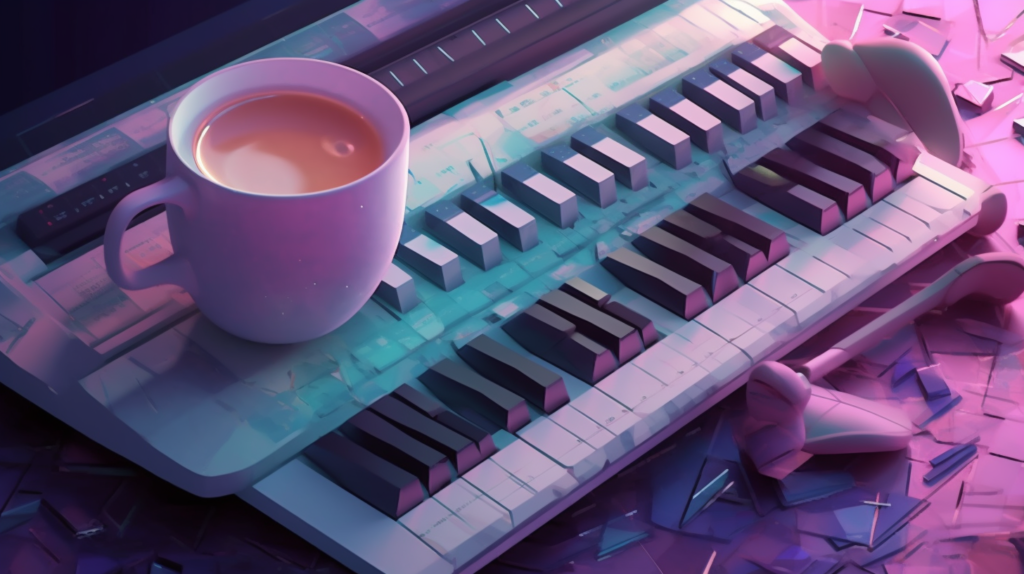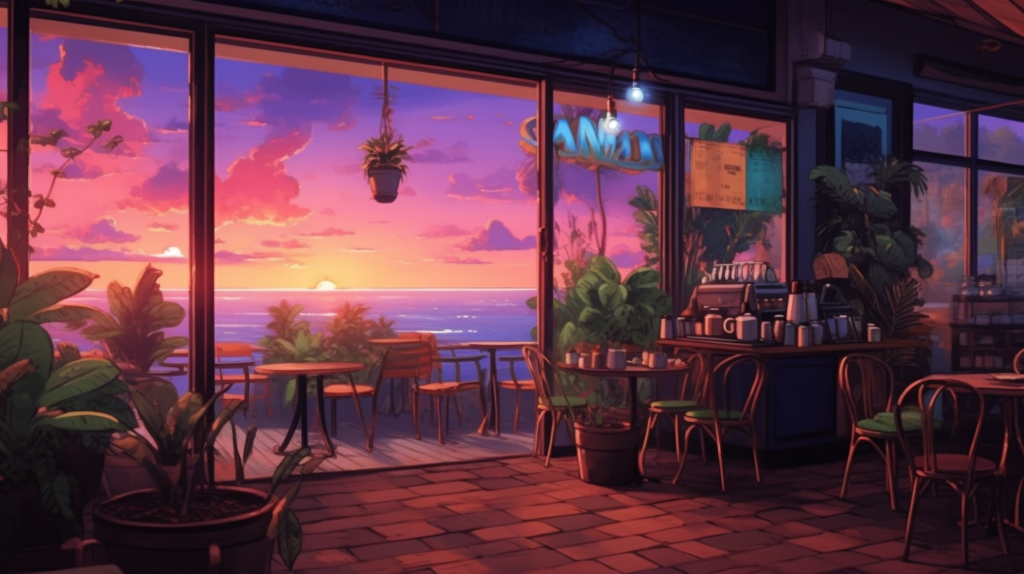
Lofi owes much of its unique charm to the clever use of chord progressions. It’s a musical form where simplicity meets complexity, and where the chords themselves become storytellers. As an experienced musician, you’re likely familiar with the basics of lofi chord progressions, but in the realm of lofi, these progressions do more than just form the harmonic backbone of a track. They set the mood, dictate the flow, and invite listeners into a world of introspection and nostalgia.
Anatomy of Chord Progressions
Diving into the anatomy of lofi chord progressions, we find a rich tapestry woven from the threads of jazz and soul music. The typical chord progression in lofi often leans towards seventh chords, extended harmonies, and sometimes, unconventional chord changes.
These are not your standard pop progressions; they are more nuanced, often featuring minor seventh and major ninth chords. The use of these extended harmonies adds a layer of depth and warmth, creating that signature lofi feel.
Take, for instance, the progression Cmaj7 – Am7 – Dm7 – G7. It’s simple yet sophisticated, and its seamless flow offers a perfect canvas for melody and experimentation. The maj7 and m7 chords introduce a level of complexity that resonates well with the understated elegance of lofi.
Emotional Resonance and Chord Choices
The emotional impact of a lofi track largely hinges on its chord progression. Specific chords carry with them inherent moods: minor chords often evoke melancholy or introspection, while major chords can add a touch of hope or lightness. In lofi, these emotional tones are further enriched by the use of extended chords, adding layers of sentiment and subtlety.
Consider a progression like Em9 – A7 – Cmaj7 – Bm7. The m9 and maj7 chords here don’t just add musical complexity; they bring a rich palette of emotions. The Em9 starts the progression with a touch of melancholy, which is then lifted slightly by the A7, before being grounded again in the reflective depths of Cmaj7 and Bm7.
Technical Mastery: Composition and Arrangement in Lofi
When composing lofi chord progressions, the focus should not only be on the chord qualities but also on how they are played. The tempo typically hovers around a relaxed 70-90 BPM, offering a laid-back vibe essential to lofi. The rhythm of chord changes often plays with syncopation, adding an element of surprise and keeping the listener engaged. It’s about creating a flow that feels both organic and introspective.
Harmonically, lofi thrives on the interplay between simplicity and complexity. A progression might start with a simple triad, then evolve into a more complex extended chord, and resolve in a minimalist fashion. This balance is key to maintaining the lofi aesthetic.
As you experiment with arrangements, consider the use of sparse instrumentation, focusing on the quality and tone of each chord. The beauty often lies in the spaces between the chords, in the silence as much as in the sound.
Innovative Techniques in Modern Lofi
Modern lofi music is not just about replicating the sounds of the past; it’s also about innovation. Contemporary artists often infuse electronic elements, sampling, and digital effects into their chord progressions. This fusion creates a fresh sound that still pays homage to traditional lofi aesthetics.
Consider the use of synthesizers to create atmospheric pads that support your chord progressions. Or experiment with sampling techniques to introduce unique textures and layers to your music. Digital tools like loop stations, effects processors, and DAWs (Digital Audio Workstations) offer a playground for creative expression, allowing you to manipulate chords in ways that were not possible in traditional setups.
Case Studies: Analyzing Popular Lofi Tracks
To understand the effective use of chord progressions in lofi, let’s analyze some popular tracks in the genre. A classic example might be “Eternal Youth“ by RŮDE. The track features a looping chord progression that creates a hypnotic and reflective atmosphere. The chords are simple, yet their arrangement and the textural elements layered over them create a rich and emotive soundscape.
Another example is “5:32pm“ by The Deli. This track showcases a jazz-influenced chord progression that evokes a sense of nostalgia and calm. The progression is not overly complex, but the choice of chords and the way they are played and layered with lofi beats and ambient noises, create an immersive experience.
Exclusive Chord Progression Examples for Your Compositions
As advanced producers, experimenting with chord progressions is key to crafting unique lofi tracks. Here are some sophisticated progressions to inspire your next composition:
- Progression A: Fmaj9 – Em7 – Am7 – Dm7. This progression melds the warmth of Fmaj9 with the introspective tones of Em7 and Am7, concluding with the contemplative Dm7. It’s perfect for creating a reflective, yet uplifting mood.
- Progression B: Cm9 – Abmaj7 – Gm7 – Cm7. Starting with the moody Cm9 and moving through the lush sounds of Abmaj7 and Gm7, this sequence is ideal for a more melancholic or introspective piece.
- Progression C: Gbmaj7 – Bbm7 – Db7 – Gbmaj7. This progression uses the richness of the Gbmaj7 and the subtle tension of the Db7 to create an intriguing, slightly unresolved feel, typical in many lofi tracks.
These progressions are not just sequences of chords; they are emotional landscapes waiting to be explored. Feel free to add your own variations, experiment with inversions, or integrate different rhythmic patterns to personalize these progressions.
Conclusion
The world of lofi music is constantly evolving, and with it, the use of chord progressions. As producers, the journey is never static. It’s a continuous exploration of sound, emotion, and expression. The future of lofi is likely to see even more blending of genres, innovative use of technology, and bold harmonic experiments.
Remember, the essence of lofi lies in its ability to evoke emotion and create an atmosphere. The chord progressions you choose are powerful tools in this process. They are the foundation upon which your unique soundscapes are built.
Further Resources for Deep Dive
To expand your knowledge and skills in lofi music production, consider exploring the following resources:
- Online Tutorials and Courses: Websites like Skillshare and YouTube offer in-depth tutorials on advanced music theory and lofi production techniques.
- Books on Music Theory and Composition: Titles like “The Jazz Theory Book” by Mark Levine can provide deeper insights into complex chord structures and progressions.
- Music Production Forums and Communities: Engage with fellow producers on platforms like Gearspace, Reddit’s r/makinghiphop, or lofi music forums to exchange ideas and get feedback on your work.
In the vast and ever-changing landscape of lofi music, your unique voice and creativity are your greatest assets. Keep exploring, experimenting, and pushing the boundaries of what chord progressions can do in your compositions.





